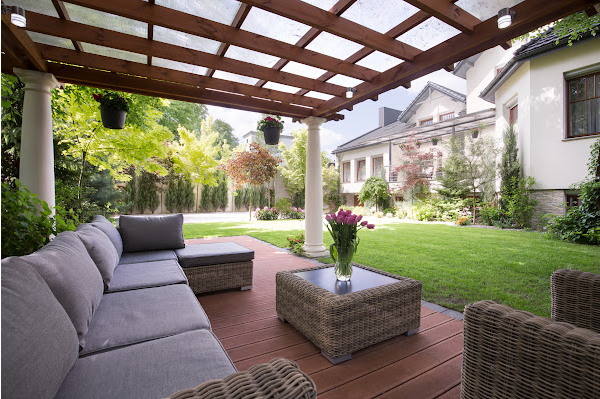
To achieve an aesthetically pleasing and beautiful landscape design, there are some simple elements that must go into it. You also want to be sure that you do not rush into it or through the process either. A rushed project will always “feel” rushed, and you do not want your outside oasis to feel like it is anything but calm and serene. So, when approaching the basics of landscaping design, be sure to think it through and enjoy the process. Here are some helpful principles to aid you along the way.
Unity And Balance
You want a uniform and natural scene that complements and blends well with the surrounding landscape. Unity is achieved by everything having purpose and the repetition of features and plants that you are including in your landscape.
Balance is also important. You want your visual attraction to have an asymmetrical balance which means that opposite sides of your landscape will consist of contrasting colors and textures but still work to create similar visual attractions. This can be very eye-pleasing and attention-grabbing.
Transition And Rhythm
Transition within your outdoor space is when something gradually changes from one type of design to another. Transitions in your landscape design can be made with varying colors from different or similar plants. You can also achieve transition with objects that vary in size, form, or texture. Whatever you choose, it is important that the transition feels smooth and deliberate.
Rhythm, much like transition in your landscape, also needs to be smooth and deliberate. A rhythmic flow for your landscape can be achieved with repeating color schemes, outlines, shapes, or sizes of features found in your design. The eyes should be able to flow easily from one area to another.
Proportion And Focal Points
Proportion refers to the different sizes of different parts of your design, as well as the landscape. When considering the basics of landscaping design, this is important to maintain when designing your area. This can be achieved by ensuring that all parts of the area you are working with or having equal or similar amounts of elements make it visually balanced.
Additionally, focal points are also important. A focal point is something you work out from, such as a fire pit. You start with something centered and build outward from that. Whatever element you use to achieve a visually pleasing landscape design, such as landscape plants or other green foliage, it should flow and fit with your surrounding setting, as well.
Repetition And Simplicity
Repetition is achieved by utilizing features that are identical in shape, color, and size more than once in your landscape. However, it is important to remember that what you are wanting to achieve is a very fluid and pleasant rhythm and not a design that feels monotonous and excessive to the eye. Wisely using different elements to achieve repetition can help create a symmetrical balance.
The basics of landscaping help you with avoiding the mistake of creating something too excessive or confusing to a viewer’s perception. Simplicity also helps with reducing costs since it keeps installation and maintenance of your landscape design minimal and simple. Most homeowners are, after all, interested in a design that is both cost-effective and easy to care for.
Contact Us For Your Landscaping Needs
If you live in or around the Allendale, NJ, area, and need a professional landscape designer, please contact us. For more than 40 years, we have provided our clients with friendly service and professional results. We can be reached by phone, email, or by our web form. Don’t wait another day, contact us today.
